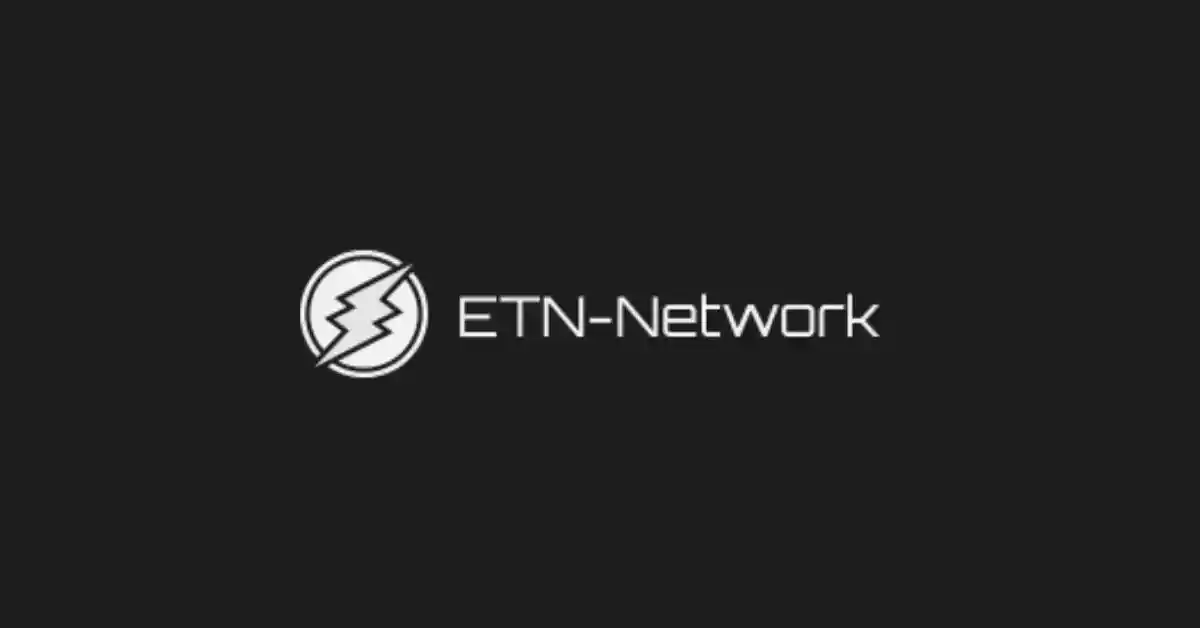
Exploring Different Types of Blockchains: A Comprehensive Guide
Welcome to our comprehensive guide on different types of blockchains that are transforming digital transactions. Blockchain technology is disrupting industries and changing the way we conduct transactions. Understanding the different types of blockchains is crucial for businesses and individuals who want to harness the power of this innovative technology.
In this guide, we will explore public blockchains, private blockchains, consortium blockchains, hybrid blockchains, permissionless blockchains, permissioned blockchains, Ethereum, and other types of blockchains. We will provide an overview of the benefits and challenges of each type and their potential use cases.

Key Takeaways:
- Blockchain technology is transforming digital transactions.
- Understanding the different types of blockchains is crucial for harnessing the power of this technology.
- In this guide, we will explore public, private, consortium, hybrid, permissionless, permissioned, Ethereum, and other types of blockchains.
- We will provide an overview of the benefits, challenges, and potential use cases of each type.
Understanding Public Blockchains
Public blockchains are a type of blockchain that operates as a decentralized, open network. This means that anyone can participate in the network and transactions are verified and recorded by nodes scattered throughout the network. Each node maintains a complete copy of the blockchain, which ensures its immutability.
Public blockchains are often used for cryptocurrencies, such as Bitcoin and Ethereum. The decentralized nature of public blockchains makes them appealing to those who value transparency and trustlessness. Transactions can be completed without the need for intermediaries, which reduces transaction fees and processing times.
However, the openness of public blockchains can also be a challenge. Since anyone can participate in the network, it can be difficult to maintain the integrity of the network. Additionally, the consensus mechanism used by public blockchains can be slower and less efficient than those used by private or consortium blockchains.
Despite these challenges, public blockchains continue to play a significant role in the blockchain ecosystem. Their transparent and trustless nature makes them ideal for a variety of use cases, from financial transactions to supply chain management.

"Public blockchains are often used for cryptocurrencies, such as Bitcoin and Ethereum."
Exploring Private Blockchains
Private blockchains are different from public blockchains in that they are permissioned, meaning that access to the network is restricted to a select group of users. This makes them suitable for use cases that require a higher level of control and privacy.
Organizations can benefit from using private blockchains in a number of ways. They can be used to securely store and manage sensitive data, such as medical records or financial information. Private blockchains can also be used for supply chain management, ensuring that all participants have access to the same data and that transactions are recorded accurately.
However, implementing a private blockchain requires careful consideration. The organization must carefully choose who has access to the network and how permissions are granted. They must also consider the tradeoffs between decentralization and control, as a highly centralized private blockchain may not provide the same level of security and transparency as a public blockchain.
| Advantages of Private Blockchains | Challenges of Private Blockchains |
|---|---|
|
|
Despite these challenges, private blockchains have already seen widespread adoption in industries such as healthcare, finance, and logistics. As the technology continues to evolve, we can expect to see even more innovative use cases for private blockchains.

By understanding the benefits and considerations of private blockchains, organizations can make informed decisions about how to leverage this technology in their operations. With the right approach, private blockchains can provide a secure, efficient, and transparent way to manage digital transactions.
Unveiling Consortium Blockchains
Consortium blockchains are a collaborative effort between multiple organizations, where control over the network is shared. Unlike public blockchains, access to consortium blockchains is restricted, making them a type of permissioned blockchain.
The collaborative nature of consortium blockchains makes them suitable for use cases that involve multiple parties working together, such as supply chain management. By using a consortium blockchain, all parties can access the same information in real-time, improving efficiency and transparency.
However, the shared control aspect of consortium blockchains can also present challenges. Since multiple parties are involved, decision-making can become more complex, and there may be disagreements over governance and control. Additionally, determining the appropriate level of access for each participant can be challenging, as well as ensuring data privacy and security.
| Advantages | Challenges |
|---|---|
| Improved collaboration and transparency | Complex decision-making and governance |
| Efficient sharing of information among multiple parties | Determining appropriate access for each participant |
| Greater efficiency and reduced costs | Ensuring data privacy and security |
Despite these challenges, consortium blockchains offer a middle ground between fully public and fully private blockchains. Since they allow multiple organizations to collaborate on a shared network, they have the potential to transform industries and improve efficiency and transparency in various use cases.

Examining Hybrid Blockchains
Hybrid blockchains offer a combination of the transparency and openness of public blockchains with the privacy and control of private blockchains. These types of blockchains use a combination of public and private nodes to achieve a balance between the benefits of both types.
Hybrid blockchains can be useful in situations where some data needs to be kept private, but other data can be made publicly available. For example, a supply chain management system may use a hybrid blockchain to track products as they move through the supply chain. The data about the products and their movements can be stored on the public nodes, while data related to pricing and financial transactions can be stored on the private nodes.
One popular example of a hybrid blockchain is the Hyperledger Fabric blockchain. Hyperledger Fabric is a permissioned blockchain platform that allows organizations to create private channels for confidential transactions while still allowing for public transaction verification on the main blockchain network. Another example is the Dragonchain blockchain, which offers hybrid capabilities combined with public smart contracts that can be written in multiple programming languages.

Hybrid blockchains provide a versatile and flexible solution for businesses and organizations that require both privacy and transparency in their operations. They can be used for a wide range of applications, including supply chain management, finance, healthcare, and more.
Understanding Permissionless Blockchains
Permissionless blockchains operate as open networks, allowing anyone to participate and validate transactions without restriction. Unlike permissioned blockchains, no central entity controls access or governs the network. Instead, a decentralized consensus mechanism ensures transaction approval and security.
Decentralization is one of the key advantages of permissionless blockchains. As there is no single entity in control, it is incredibly difficult for bad actors to manipulate the system. The open access nature of permissionless blockchains also allows for greater inclusivity and participation, promoting greater transparency and accountability.

Bitcoin, the world's first cryptocurrency, is perhaps the most well-known example of a permissionless blockchain. Other notable permissionless blockchain platforms include Ethereum, Litecoin, and Bitcoin Cash.
While permissionless blockchains offer numerous benefits, there are also some challenges to consider. For example, the lack of control over who participates in the network and how could lead to slower transaction processing times. Additionally, the open nature of permissionless blockchains makes them more vulnerable to attacks from bad actors.
Despite these challenges, permissionless blockchains have already transformed the digital landscape and will likely continue to do so in the future. As the technology continues to evolve, we can expect to see further innovation and disruption in various industries and applications.
Exploring Permissioned Blockchains
Permissioned blockchains are private networks that restrict access to a select group of individuals or organizations. These blockchains employ controlled consensus mechanisms, where a centralized entity has the power to validate transactions, unlike the decentralized consensus approach of permissionless blockchains.
The restricted access and controlled consensus mechanisms of permissioned blockchains offer advantages for enterprises that require secure and efficient digital transactions. Permissioned blockchains can ensure compliance with regulations and provide a trusted environment for business partners to exchange sensitive information.
| Advantages | Considerations |
|---|---|
| Enhanced privacy and security | Centralization can create single points of failure |
| Efficient transaction processing | Lower degree of transparency compared to permissionless blockchains |
| Opportunities for collaboration and shared control among trusted parties | Limited network effects due to restricted access |
Permissioned blockchains have been implemented in various industries, including finance, supply chain management, and healthcare. For example, JPMorgan's Quorum is a permissioned blockchain platform designed for financial institutions to securely conduct transactions and share sensitive data. Walmart uses a permissioned blockchain to track the origins and movements of food products in their supply chain, ensuring food safety and quality.

The implementation of permissioned blockchains requires careful consideration of the network's governance, consensus mechanism, and access control policies. However, they offer a valuable solution for specific use cases that require a balance between privacy, security, and shared control among trusted parties.
Diving into Ethereum: A Smart Contract Blockchain
Ethereum is a blockchain platform that allows the development and execution of smart contracts and decentralized applications (DApps). Ethereum has quickly become one of the most widely used blockchain platforms globally and is often regarded as the second most valuable cryptocurrency after Bitcoin.
One of the key features of Ethereum is its ability to create smart contracts. Smart contracts are self-executing programs that can be programmed to automatically execute when predefined conditions are met. This means that contracts can be created without the need for intermediaries, reducing the time and cost associated with traditional contract law. Smart contracts have the potential to revolutionize industries that involve the exchange of assets such as real estate, finance, and insurance.
Ethereum's smart contracts and DApps are powered by Ether, the cryptocurrency native to the Ethereum network. Ether is used to fuel transactions on the network and incentivize validators to maintain the network's security and stability.
Ethereum's decentralized nature also makes it attractive to developers. Unlike traditional software development, where changes to the code require a central authority's approval, changes to Ethereum's code can be proposed and implemented through a decentralized governance process. This means that anyone can contribute to the platform's development, making it more open and transparent.
Moreover, Ethereum's decentralized nature makes it resistant to censorship and single points of failure. This means that applications built on Ethereum can operate without the risk of being shut down or compromised by a single point of failure.
Some of the most popular DApps built on Ethereum include Decentraland, a virtual reality platform, and Uniswap, a decentralized exchange for trading cryptocurrencies.

Overall, Ethereum's smart contract capabilities and decentralized nature have made it one of the most popular and innovative blockchain platforms in the industry. Its potential to disrupt traditional industries and create new business models has attracted numerous developers and businesses worldwide.
Exploring Other Types of Blockchains
In addition to the previously discussed public, private, consortium, hybrid, permissionless, and permissioned blockchains, there are other types of blockchains worth exploring. These alternative approaches include sidechains and sharding, which offer unique solutions to specific blockchain challenges.
Sidechains
Sidechains are separate blockchains that run parallel to the main blockchain. They enable the execution of more complex smart contracts and provide a way to scale the blockchain network. By separating more specific transactions onto a sidechain, the main blockchain can focus on maintaining its core functions and avoiding congestion.
One example of a sidechain is the Liquid Network, developed by Blockstream. It enables fast and secure Bitcoin transactions between exchanges and other businesses. By keeping these transactions off the main blockchain, the Liquid Network helps reduce network congestion and fees.
Sharding
Sharding is a technique used to increase blockchain scalability. It involves splitting the main blockchain into smaller, more manageable units known as shards. Each shard can process transactions independently, increasing the overall speed and throughput of the blockchain network.
Ethereum is currently experimenting with sharding as a way to increase its scalability and reduce network congestion. The proposed Ethereum 2.0 upgrade will incorporate sharding, enabling the blockchain to process thousands of transactions per second.
Overall, these alternative types of blockchains showcase the evolving and innovative nature of the technology. As blockchain continues to transform industries and economies, it's important to stay updated on the latest developments and advancements.

Conclusion
After exploring the different types of blockchains in this comprehensive guide, it's clear that these innovative technologies have the potential to transform digital transactions and disrupt traditional industries. From public blockchains that operate as open networks to private and consortium blockchains that offer restricted access and shared control, there are numerous options available for businesses and organizations to leverage this technology.
Hybrid blockchains offer a balance between transparency and privacy, while permissionless and permissioned blockchains have their own advantages and considerations to keep in mind. Ethereum stands out as a smart contract blockchain that enables the development of decentralized applications, and there are even alternative approaches such as sidechains and sharding being explored.
As the blockchain landscape continues to evolve and new use cases emerge, it's important to stay updated and informed. This comprehensive guide serves as a starting point for understanding the types of blockchains available and their potential impact on digital transactions. Keep exploring and embracing the possibilities that blockchain technology can offer!
FAQ
Q: What are the different types of blockchains?
A: The different types of blockchains include public blockchains, private blockchains, consortium blockchains, hybrid blockchains, permissionless blockchains, permissioned blockchains, and Ethereum.
Q: What is a public blockchain?
A: A public blockchain is a decentralized and open network that allows anyone to participate. It provides transparency and security for digital transactions.
Q: What is a private blockchain?
A: A private blockchain is a permissioned network that restricts access to a select group of participants. It offers increased privacy and control over the network.
Q: What is a consortium blockchain?
A: A consortium blockchain is a collaborative network where multiple organizations share control. It enables shared governance and secure transactions among trusted partners.
Q: What is a hybrid blockchain?
A: A hybrid blockchain combines elements of both public and private blockchains. It offers a balance between transparency and privacy, depending on the use case.
Q: What is a permissionless blockchain?
A: A permissionless blockchain allows open access and decentralized consensus. It enables anyone to participate in the network without requiring permission or approval.
Q: What is a permissioned blockchain?
A: A permissioned blockchain restricts access and requires approval from designated participants. It offers controlled consensus mechanisms for enterprise settings.
Q: What is Ethereum?
A: Ethereum is a blockchain platform that enables the execution of smart contracts and the development of decentralized applications (DApps). It has had a significant impact on the blockchain industry.
Q: Are there other types of blockchains?
A: Yes, there are other types of blockchains, such as sidechains and sharding. These alternative approaches have their own unique features and potential benefits.
Q: Why is it important to understand the different types of blockchains?
A: Understanding the different types of blockchains is important because they can transform digital transactions and have implications for various industries. Staying updated on the evolving blockchain landscape is crucial for businesses and individuals alike.








